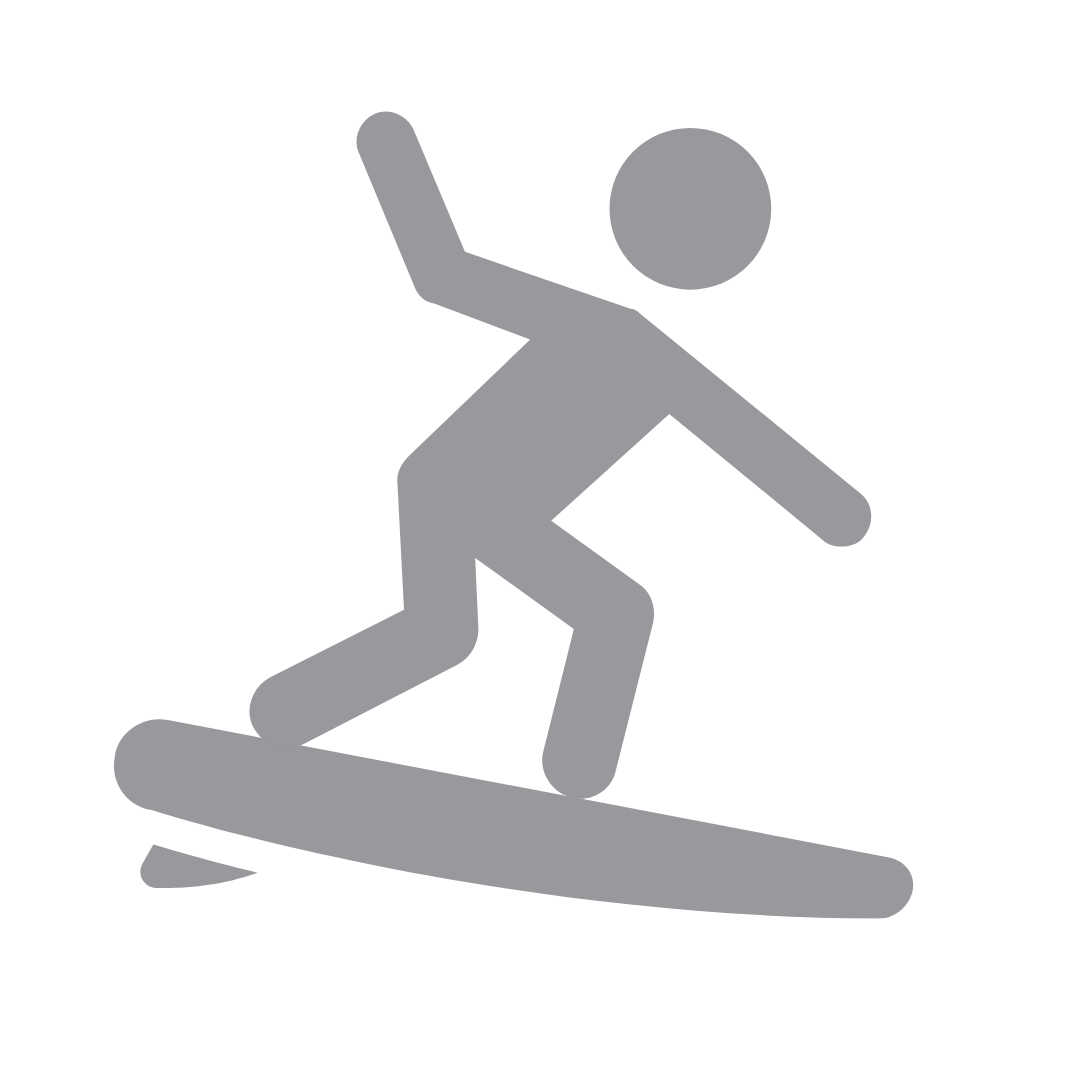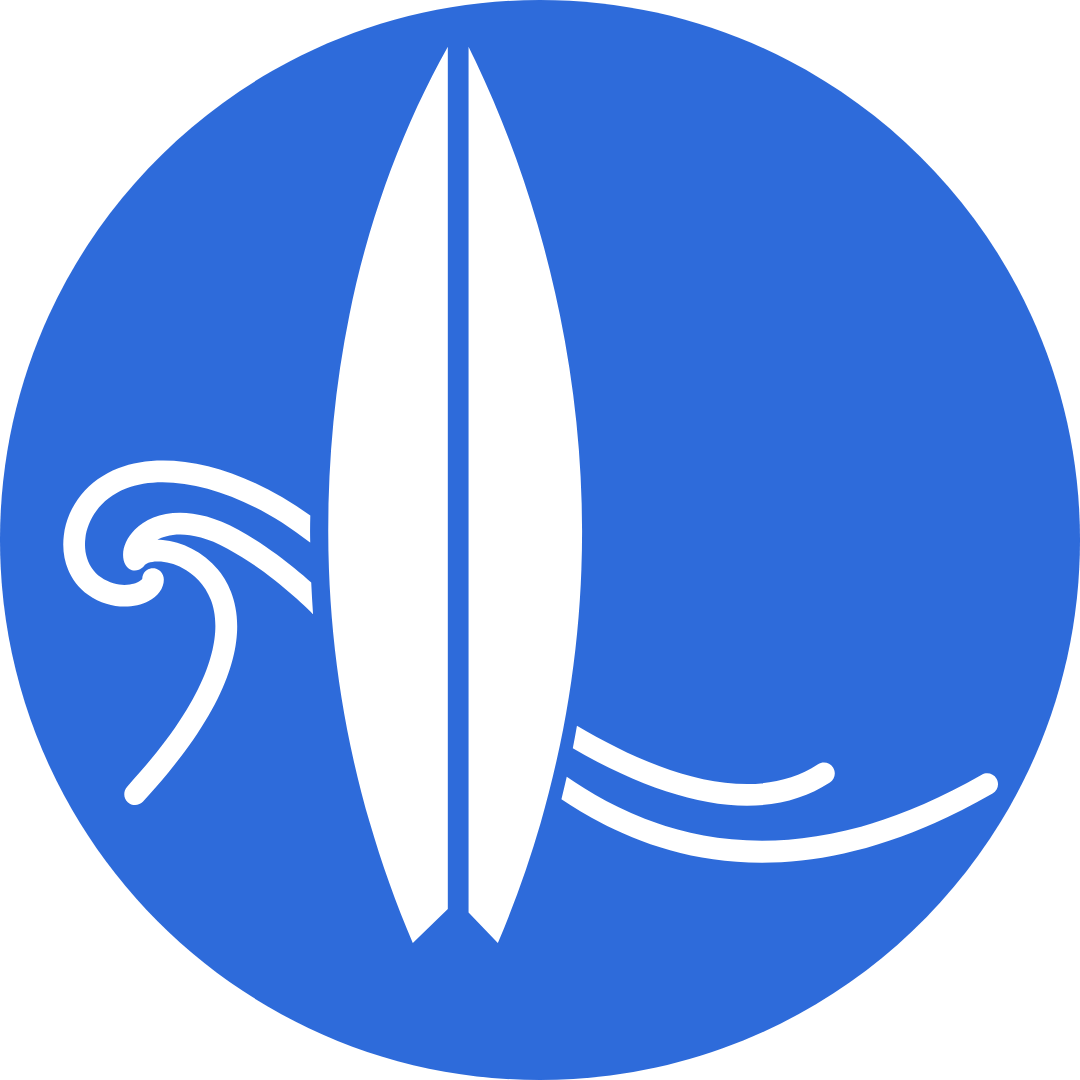Posted by Jeb Brinkley | 11.09.2023 | Learn To Surf
Riding the Wave: A Beginner’s Guide to Choosing the Perfect Surfboard
Surfing is a sport that captivates the adventurous spirit in all of us. After a lesson with our expert staff, we hope you’ll be hooked enough to start looking into getting your own board! As a beginner eager to ride the waves, one of the most important decisions you’ll make is choosing the right surfboard. With the wide array of options available mixed with confusing surf lingo, it can seem overwhelming. This guide is here to help you navigate the vast ocean of surfboards and find the perfect one that will help you catch wave after wave and develop your own unique style. Through
this, we will help you understand what to look for, what to avoid, and how to get comfortable shredding more waves!
Understand Your Skill Level:
 Before you embark on your surfboard hunt, it’s crucial to assess your skill level honestly. As a beginner, you’ll want a board that offers stability and buoyancy, making it easier to paddle out to the break and balance on a wave. This will help increase the number of waves you can catch, as well as reduce any frustrations that may arise. A longboard or a soft-top foam board offers the most stability and ease of paddling. These boards are wide, forgiving, and have a ton of volume, making them ideal for beginners. These are what our coaches use when teaching, allowing you to develop confidence in the water while getting the feel of how the board reacts on a wave.
Before you embark on your surfboard hunt, it’s crucial to assess your skill level honestly. As a beginner, you’ll want a board that offers stability and buoyancy, making it easier to paddle out to the break and balance on a wave. This will help increase the number of waves you can catch, as well as reduce any frustrations that may arise. A longboard or a soft-top foam board offers the most stability and ease of paddling. These boards are wide, forgiving, and have a ton of volume, making them ideal for beginners. These are what our coaches use when teaching, allowing you to develop confidence in the water while getting the feel of how the board reacts on a wave.
Know the Different Types of Surfboards:
Surfboards come in hundreds of shapes and sizes, each designed for specific wave conditions and surfing styles. Here’s a brief overview of some of the overarching categories:
- Longboards: These are perfect for beginners due to their stability and ease of paddling, and are great for smaller waves. These typically range in size from 8.5’ – 10’.
- Shortboards: Designed for advanced surfers, these boards are highly maneuverable and great for steeper, more powerful waves. These come in many shapes, all fi
 ne-tuned to specific requirements.
ne-tuned to specific requirements. - Fish Shape: Short and wide, these boards are excellent for small to medium-sized waves and are more forgiving than shortboards. They tend to have more of a flow and cruise riding style, offering different wave styles than a performance shortboard.
- Funboards: These are essentially a hybrid between longboards and shortboards, offering increased stability while preserving maneuverability. These are great to take out when your arms need a break!
Consider the Board Size:
The size of the surfboard is a critical factor. Generally, longer, wider, and thicker boards provide more stability, allowing the rider to catch waves with more ease and mitigate frustration. As a beginner, opt for a board at least 2-3 feet taller than your height and wide enough to provide stability when standing on it. A good rule of thumb is to choose a board that’s around 7 to 9 feet long.
Consider the Construction:
Surfboards can be made from various materials, such as full foam, fiberglass, epoxy, or soft-top foam. Foam boards are ideal for beginners due to their buoyancy and forgiveness. Epoxy boards are lightweight and durable, making them a good choice for progressing beginners. Soft-top foam boards are incredibly forgiving, making them perfect for beginners just starting out.
Budget Considerations:
Surfboards come in a wide price range. While it’s tempting to buy a cheap board, investing in a quality board that matches your skill level will significantly enhance your surfing experience. Buying a used board is a great way to be a sustainable surfer. It’s a great way to explore board designs in a sustainable and less expensive way. If you do purchase a used board, make sure to check that it’s in good condition without major dings or damages.
Seek Expert Advice:
Don’t hesitate to ask for advice from experienced surfers or visit a local surf shop. The staff at these shops are often passionate surfers themselves and can provide valuable insights tailored to your specific needs. If you are hooked after a lesson, ask one of our coaches for a recommendation. If you are interested and don’t know where to start, we would love to help you out!

Overall, choosing the right surfboard is the first step in your surfing journey. By understanding your skill level, knowing the different types of surfboards, determining the right size, evaluating build options, and chatting with our amazing instructors, you’ll be well on your way to finding the perfect board tailored to you. Remember, surfing is not just a sport; it’s a lifestyle. Embrace the learning process, practice patience, and soon enough, you’ll ride the waves with style and confidence. Stay stoked and enjoy the ride!







 RENTALS
RENTALS LESSON
LESSON CAMPS
CAMPS ABOUT
ABOUT SHOP
SHOP